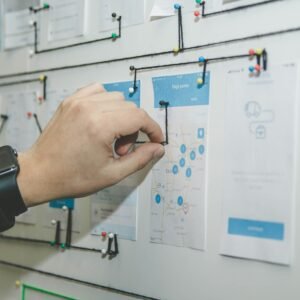How Opik India Enhances Website Accessibility for All Users
Website Development & Design
Accessibility Isn’t Optional — It’s Essential
A truly effective website serves all users, regardless of their abilities. Accessibility ensures that people with visual, auditory, cognitive, or motor impairments can navigate, interact with, and benefit from your site.
At Opik India, accessibility is not a box to tick — it's a core principle that drives inclusive design.
Making a website accessible doesn’t just widen your audience; it also improves overall usability, supports better SEO, and demonstrates your brand’s commitment to equal access.
What Is Web Accessibility?
Web accessibility refers to the design and development of websites that people of all abilities can use. This includes:
Users with visual impairments who rely on screen readers
Individuals with mobility challenges who navigate with keyboards
People with hearing impairments who need captions or transcripts
Users with cognitive limitations who require clear layouts and language
Accessibility guidelines, such as those defined by the Web Content Accessibility Guidelines (WCAG), provide standards that help web developers meet these diverse needs.
Opik India's Approach to Accessible Web Design
At Opik India, we integrate accessibility into the foundation of every website we build. This ensures your digital presence is inclusive, future-ready, and legally compliant.
Here’s how we approach it:
1. Semantic HTML Structure
We use clean, well-structured HTML that provides meaning to screen readers and assistive technologies. Proper heading tags, lists, and labels make it easier for users to understand the content hierarchy and navigate your site efficiently.
2. Keyboard Navigation Support
Some users navigate websites entirely with keyboards. Opik India ensures that all interactive elements — such as menus, buttons, and forms — are fully functional through keyboard-only navigation.
3. Text Alternatives for Media
All images on your website are given descriptive alt text, so users relying on screen readers can understand visual content. We also support captions or transcripts for audio and video elements to ensure full access to media.
4. Contrast and Readability
We carefully select colour palettes and text styles to ensure strong contrast and readability. This benefits not only users with visual impairments but everyone viewing your site on different devices or in varied lighting conditions.
5. Responsive and Adaptive Design
Accessibility goes hand-in-hand with responsive design. At Opik India, we build sites that adjust seamlessly across devices and screen sizes, ensuring consistency for all users — especially those who may rely on mobile technology.
Why Accessibility Benefits Everyone
While accessibility is designed to assist users with disabilities, it often enhances the user experience for everyone. Clear layouts, intuitive navigation, and alternative content all contribute to a better site overall.
Accessible websites also perform better in search engines. Search crawlers, like users with screen readers, depend on semantic structure and descriptive content — both of which are emphasized in accessible design.
Stay Ahead by Partnering with Opik India
Failing to meet accessibility standards can limit your reach and even expose your business to legal risks. Opik India helps you avoid those issues by integrating accessibility best practices from the very beginning.
Whether you're updating an existing site or launching a new one, Opik India ensures it’s built for everyone. We help you reach a broader audience, improve usability, and align your brand with modern expectations for inclusivity and compliance.
Ready to Build an Accessible Website?
Let Opik India help you create a website that everyone can use.
Contact our team today for a consultation on accessibility-focused web design and development that benefits all users — and your business.


Operational Agility in Education Through ERP Interconnectivity
Operational Agility in Education Through ERP Interconnectivity School ERP...

ERP as the Nerve Center of Educational Connectivity
ERP as the Nerve Center of Educational Connectivity School...

ERP as a Tool for Evidence-Based Educational Planning
ERP as a Tool for Evidence-Based Educational Planning School...